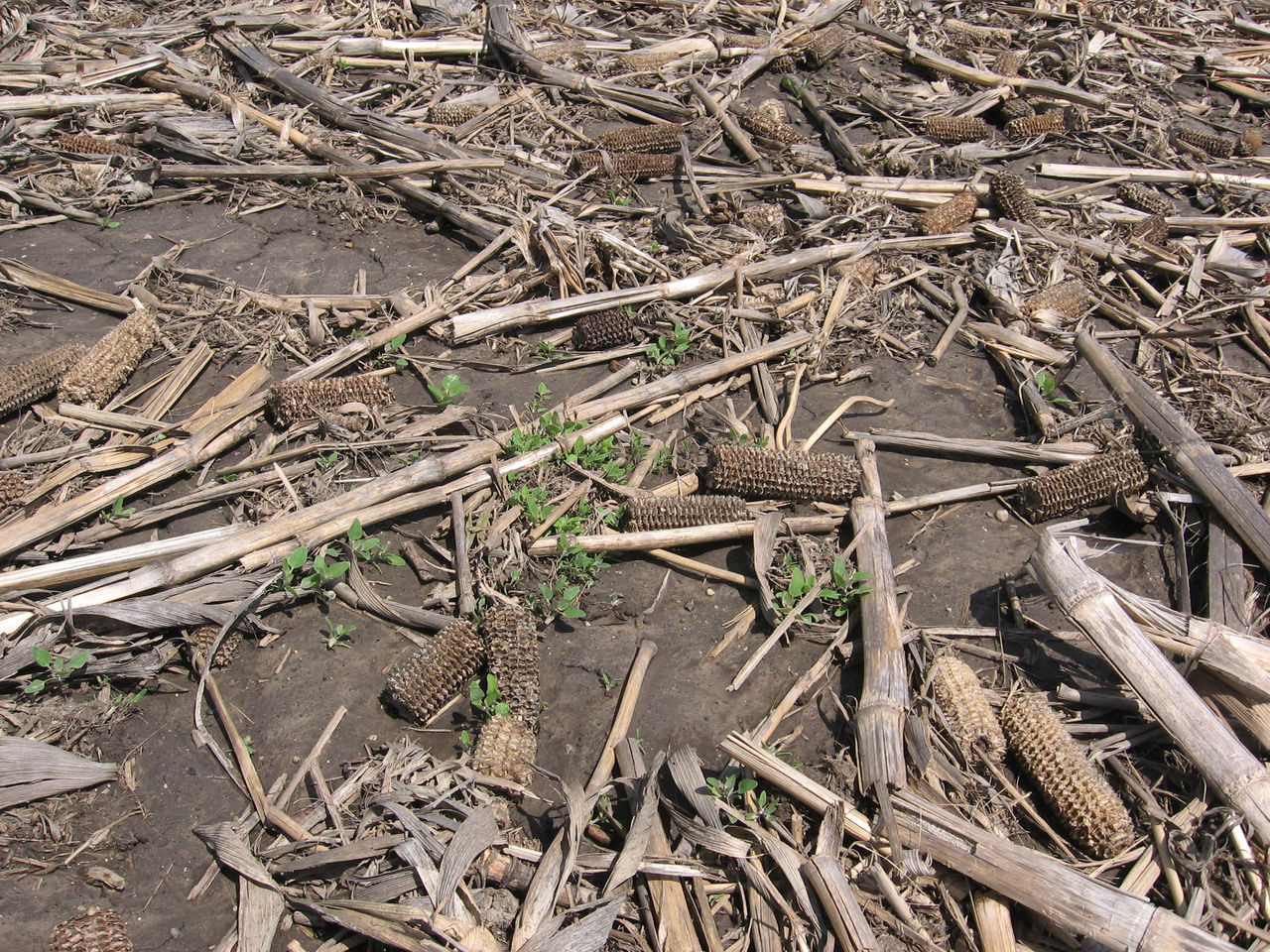A spring-time weed burndown is an integral step toward maximizing weed control and soybean yield potential. Soybean yield potential can be reduced when weeds compete with soybean plants for nutrients, water, and light.1 During early soybean growth, soybean plants and weeds can survive together without much, if any, reduction in yield potential; however, weed competition can quickly increase and become detrimental.
Weed control should not be a one-time event. Weed control activity can begin in the fall after harvest to control emerging winter annuals, in the spring as a preplant burndown or tillage operation, at planting, and during the growing season.
Successful spring burndown herbicide applications can provide control of winter annual, summer annual, and perennial weeds and are important in reduced-till and no-till systems (Figure 1). The benefits of weed removal prior to planting include:
A clean seedbed for earlier planting.
Removal of undesired growth that can inhibit uniform seed placement.
Controlling established weeds as these weeds can become the most competitive with young soybean plants.
Contributing to the management of difficult-to-control weeds.
Removal of weeds that are hosts for diseases and insects.
Providing an opportunity to use alternate mode-of-action herbicides for weed resistance management.
Spring burndown applications should be timely regarding weed growth and applied as soon as possible to help optimize weed control. Understandably, wet field conditions can cause delays in burndown applications. However, diligence is important as weeds greater than 4 inches in height can become increasingly difficult to control and as weed heights increase, herbicide rates may need to increase, which can increase overall weed control costs. Additionally, densely populated weeds with overlapping foliage may prevent herbicide penetration into the canopy for adequate control. Regardless of application timing, tank mixtures and residual herbicides should be used to provide different mode-of-action weed control to help reduce the potential for weed resistance development. Herbicide labels MUST be reviewed to determine if state or geographical restrictions apply, planting interval restrictions exist, and/or if there is any potential for crop injury. Please read and follow all label requirements and restrictions.
 Figure 1. Seedling lambsquarter in residue
Figure 1. Seedling lambsquarter in residue
Herbicides with residual activity are essential for soybean weed management systems. Incorporating residual herbicides in a burndown application can help control early-emerging, competitive, and tough-to-control weeds so post-emergence herbicide applications can be made when weeds are small and weed populations are less dense. University research has demonstrated that weeds emerging with the crop may start to impact soybean yields as early as the V2 or V3 stage of development and can cause a one percent per day yield loss for each day weeds continue to compete.2
Herbicide application decisions should be driven by field scouting before and after applications to help:
Determine the herbicides needed to control the weeds present
Determine the weed sizes to make a properly timed application and the rate required
Determine the effectiveness of an application.
Depending on geography, Bayer burndown herbicide products to consider are:
Roundup PowerMAX® herbicide, Roundup WeatherMAX® herbicide, or Roundup PowerMAX® 3* herbicide along with dicamba or 2,4-D ester and a residual herbicide such as Warrant® Herbicide. Please visit https://www.roundupreadyxtend.com/Pages/Spray-Early.aspx for burndown information.
Roundup PowerMAX herbicide, Roundup WeatherMAX herbicide, or Roundup PowerMAX 3 herbicide plus XtendiMax® herbicide with VaporGrip® Technology, a restricted use pesticide, which must be used with VaporGrip® Xtra Agent (or an equivalent vapor reducing agent) plus a residual herbicide such as Warrant Herbicide. Please visit http://www.xtendimaxapplicationrequirements.com/Pages/default.aspx for important XtendiMax with VaporGrip Technology information.
If Amaranthus species or PPO-resistant species are present, the addition of a metribuzin herbicide to the tank mix is recommended (Figure 2).
*Commercialization is dependent on multiple factors, including successful conclusion of the regulatory process. The information presented herein is provided for educational purposes only, and is not and shall not be construed as an offer to sell, or a recommendation to use, any unregistered pesticide for any purpose whatsoever. It is a violation of federal law to promote or offer to sell an unregistered pesticide.
XtendiMax® herbicide with VaporGrip® Technology is part of the Roundup Ready® Xtend Crop System, is a restricted use pesticide and must be used with VaporGrip® Xtra Agent (or an equivalent vapor reducing agent). For approved tank-mix products (including VRAs and DRAs), nozzles and other important label information visit XtendiMaxApplicationRequirements.com.
 Figure 2. Palmer amaranth seedlings grow rapidly and can quickly overtake seedling soybean plants.
Figure 2. Palmer amaranth seedlings grow rapidly and can quickly overtake seedling soybean plants.
Environmental conditions can affect the rate of weed growth, crop development, crop tolerance to herbicides, and herbicide performance. The efficacy of a burndown herbicide application can be reduced by cold temperatures; therefore, it is recommended to wait on applying herbicides until nighttime temperatures are above 40°F and daytime temperatures are at least into the 50s.3 Additional information for burndown applications can be found at https://www.roundupreadyxtend.com/Pages/Spray-Early.aspx.
Sources:
1Hartzler, B. Managing weeds to protect crop yields. Encyclopedia Article. Integrated Crop Management. Iowa State University. https://crops.extension.iastate.edu/.
2Hartzler, B. 2003. Is your weed management program reducing your economic return? Weed Science. Iowa State University. http://extension.agron.iastate.edu/.
3Hartzler, B. 2016. Cold temperatures and burndown herbicides. Integrated Crop News. Iowa State University Extension and Outreach. https://crops.extension.iastate.edu/.
Web sites verified 12/7/20. 2004_S5
